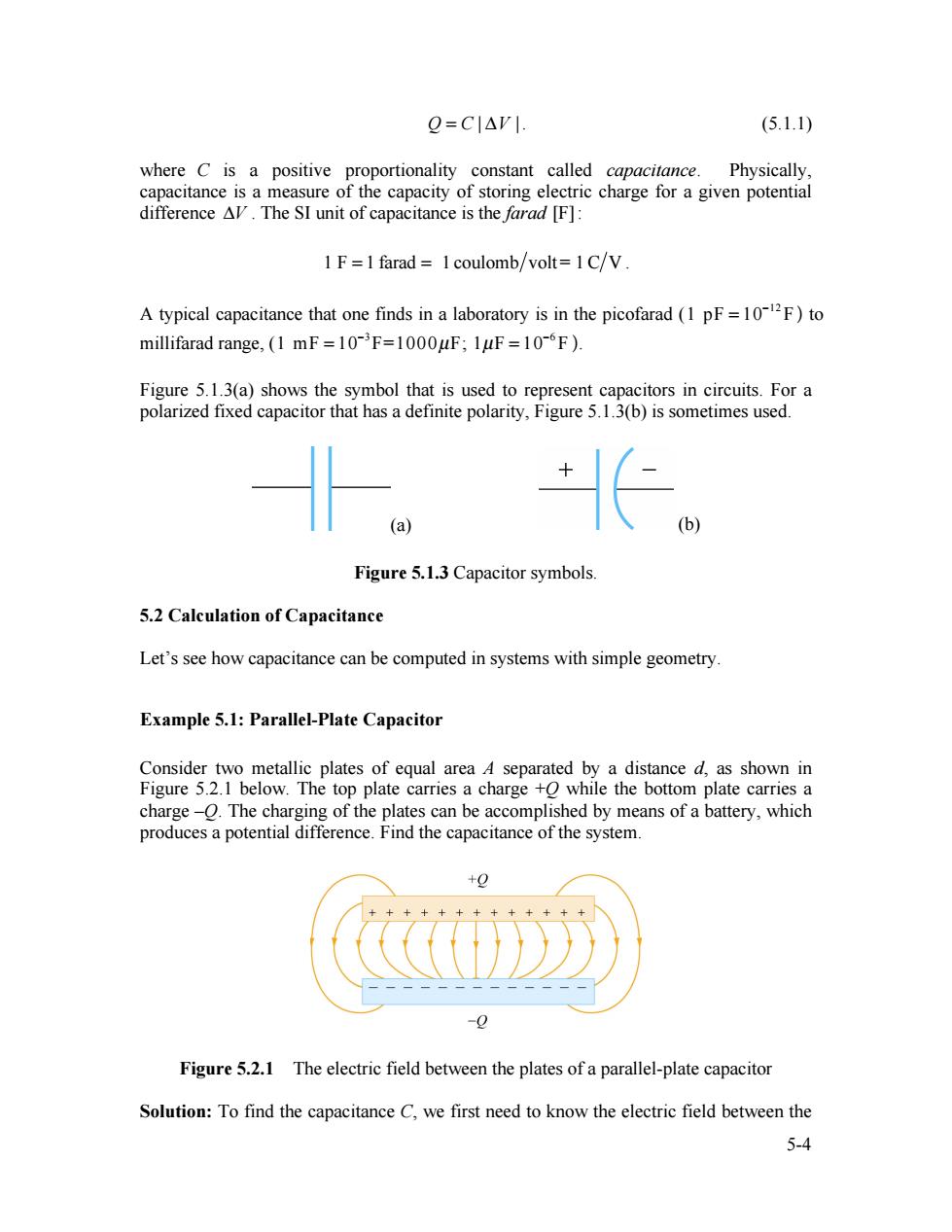正在加载图片...

Q=CI△V|. (5.1.1) where C is a positive proportionality constant called capacitance.Physically. capacitance is a measure of the capacity of storing electric charge for a given potential difference AV.The SI unit of capacitance is the farad [F]: 1 F=1 farad 1 coulomb/volt=1C/V A typical capacitance that one finds in a laboratory is in the picofarad(1 pF=102F)to millifarad range,(1 mF=10-F=1000uF;1uF=10-F). Figure 5.1.3(a)shows the symbol that is used to represent capacitors in circuits.For a polarized fixed capacitor that has a definite polarity,Figure 5.1.3(b)is sometimes used. 。长 (a (b) Figure 5.1.3 Capacitor symbols. 5.2 Calculation of Capacitance Let's see how capacitance can be computed in systems with simple geometry. Example 5.1:Parallel-Plate Capacitor Consider two metallic plates of equal area 4 separated by a distance d,as shown in Figure 5.2.1 below.The top plate carries a charge +O while the bottom plate carries a charge-O.The charging of the plates can be accomplished by means of a battery,which produces a potential difference.Find the capacitance of the system. +0 Figure 5.2.1 The electric field between the plates of a parallel-plate capacitor Solution:To find the capacitance C,we first need to know the electric field between the 5-45-4 Q = C | !V |. (5.1.1) where C is a positive proportionality constant called capacitance. Physically, capacitance is a measure of the capacity of storing electric charge for a given potential difference !V . The SI unit of capacitance is the farad [F]: 1 F = 1 farad = 1 coulomb volt= 1C V . A typical capacitance that one finds in a laboratory is in the picofarad (1 pF = 10!12 F ) to millifarad range, (1 mF = 10!3 F=1000µF; 1µF = 10!6 F ). Figure 5.1.3(a) shows the symbol that is used to represent capacitors in circuits. For a polarized fixed capacitor that has a definite polarity, Figure 5.1.3(b) is sometimes used. (a) (b) Figure 5.1.3 Capacitor symbols. 5.2 Calculation of Capacitance Let’s see how capacitance can be computed in systems with simple geometry. Example 5.1: Parallel-Plate Capacitor Consider two metallic plates of equal area A separated by a distance d, as shown in Figure 5.2.1 below. The top plate carries a charge +Q while the bottom plate carries a charge –Q. The charging of the plates can be accomplished by means of a battery, which produces a potential difference. Find the capacitance of the system. Figure 5.2.1 The electric field between the plates of a parallel-plate capacitor Solution: To find the capacitance C, we first need to know the electric field between the